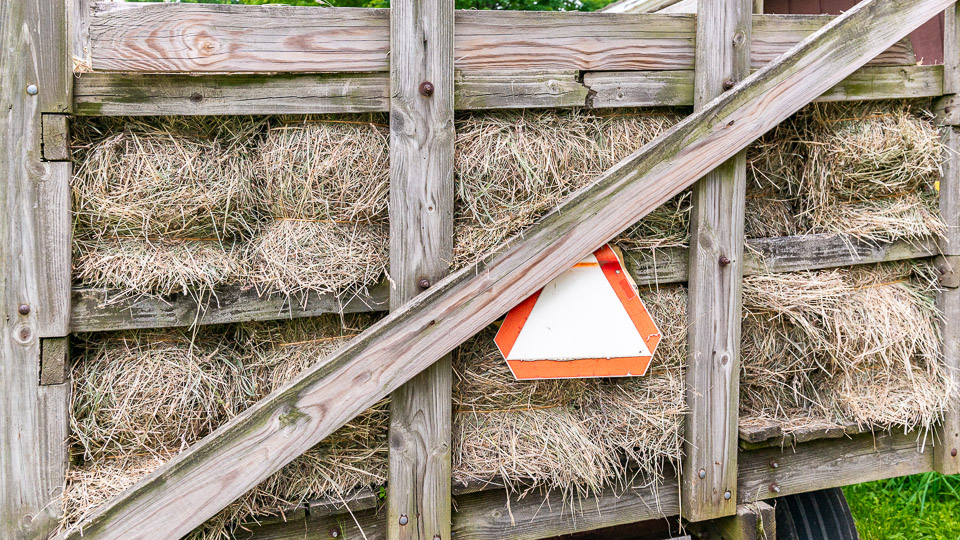
Horse Nutrition – Hay
Hay is last summer’s grass. It is a new supplement and it could also be called the original supplement. The purpose of hay is to add calories to the diet when winter is hard on the horses. Adding hay in winter to sustain life is why it was created. Adding hay when there is no pasture (drought, lack of pasture) is an inadequate substitute for fresh and healthy pasture. Here is why.
**CONTINUED IN ARTICLE TAB**
Related material – Sometimes I have a lot of material here that I have written, podcasted, video blogs and other things. They will be listed in this tab.
Use the browser back button or menu to return to the index of topics.
⬇︎ CLICK ANY IMAGE BELOW TO REVEAL MORE INFORMATION ⬇︎
Hay is last summer’s grass. It is a new supplement and it could also be called the original supplement. The purpose of hay is to add calories to the diet when winter is hard on the horses. Adding hay in winter to sustain life is why it was created. Adding hay when there is no pasture (drought, lack of pasture) is an inadequate substitute for fresh and healthy pasture. Here is why.
Most hay is created as a crop and therefore is usually one grass or a mix of a few grasses and legumes that were available only when the farmer could get into the field and harvest it. While hay is a good source of carbohydrates in the form of starch, fats in the form of cellulose and minerals, it is only a “good” source of protein. Because of this it is easy to overfeed hay because the horse will never feel satiated. The result of this is added body fat and a loss of muscle and other proteins. Please see the nutrition course to fully understand this process.
Another problem with feeding hay is that most horse owners feed it every day of the year. This does not allow for the reduction of glucose intake needed to restore the health of the cell through hormesis. Over time the cell becomes exhausted from using glucose which is a poor quality fuel and the cell becomes dysfunctional and dies.
Feeding hay has a place in the keeping of horses today. The high cost of land prevents adequate grazing land on most farms. Horses need to eat cellulose to survive but the need for a broad variety of amino acids makes supplementing with high quality protein if hay (and pasture with only one type of grass) is the primary source of food.
Hay is last summers’ grass and feeding it must be limited in horses that are “easy keepers” or are showing signs of Equine Metabolic Syndrome (EMS). There are two ways to do this. The most common way is physically limiting access to pasture and hay through limited turn out, a grazing muzzle or a hay net that retards the rate of consumption. The other way to limit hay intake is to feed sufficient protein to activate satiation through the “Protein Leverage Hypothesis.” This states that a food aggressive horse may not actually be hungry but is instead looking to meet their daily amino acid intake – something that will never happen if all they eat is hay.
Eating hay through the “Nibble Net.”
- Additional tables
- Links to other in house articles
- Links to outside articles
- Reference material used in developing this topic.
Grazing Not Browsing -Decomplexicating Equine Nutrition Part 1 of 12
The High Fat Diet – Decomplexicating Equine Nutrition Part 7 of 12
GMO, Pesticides and Fertilizers – Decomplexicating Equine Nutrition Part 9 of 12
The Horsemanship Nutrition Course – included in the membership.


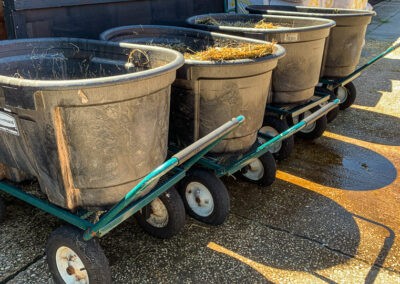
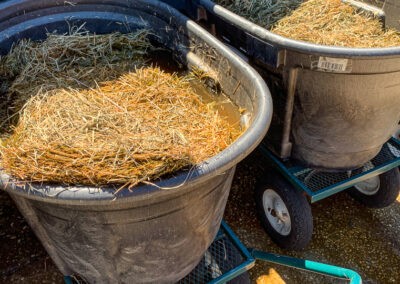
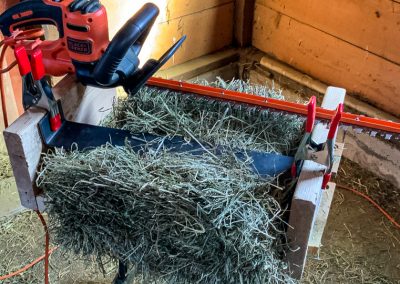
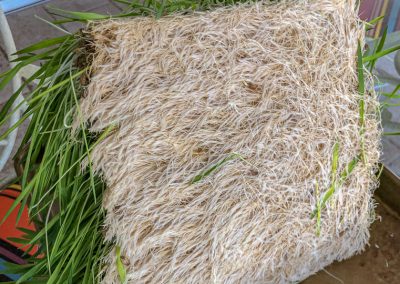
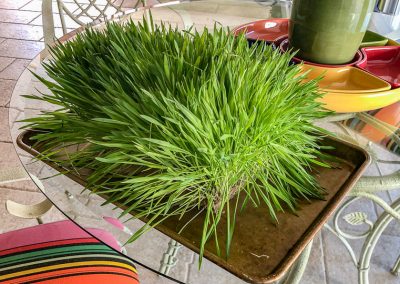


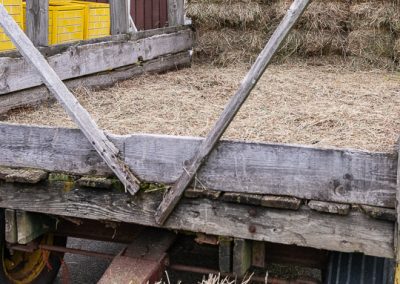
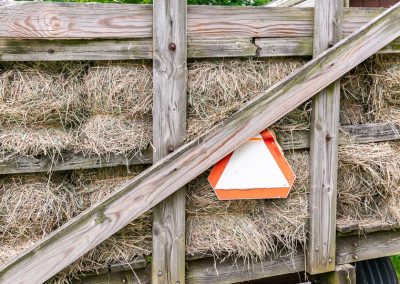
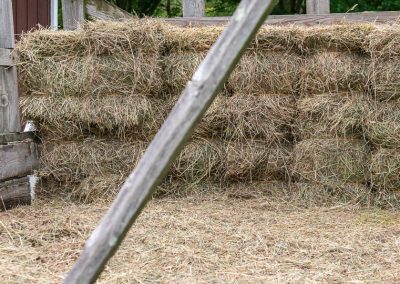

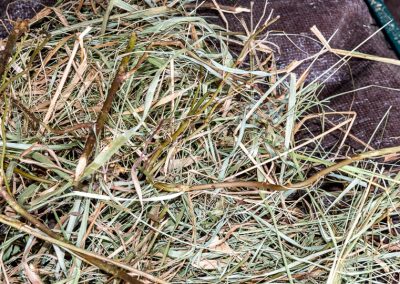
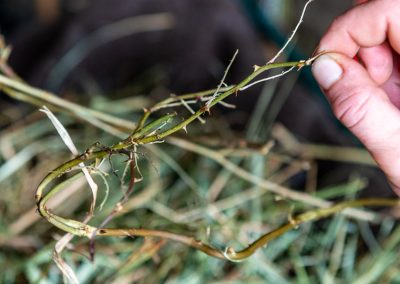
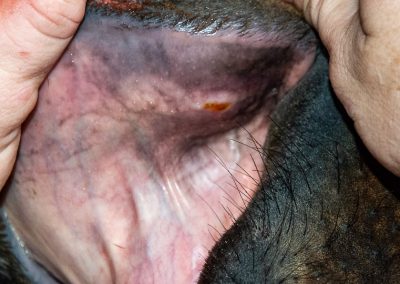
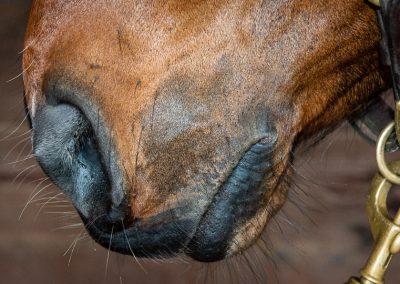
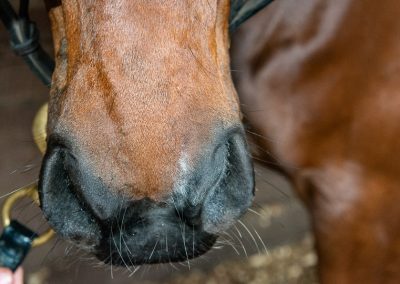

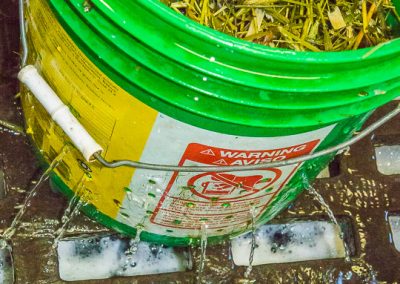
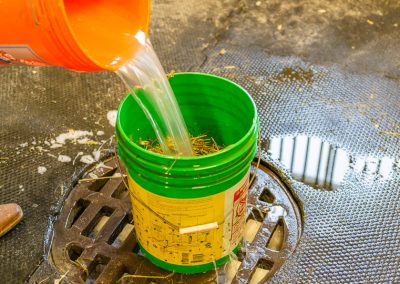


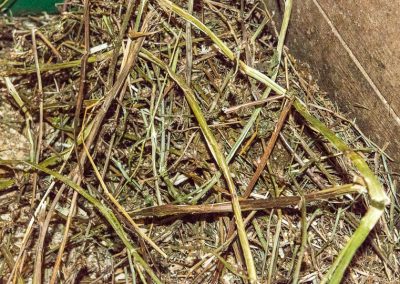

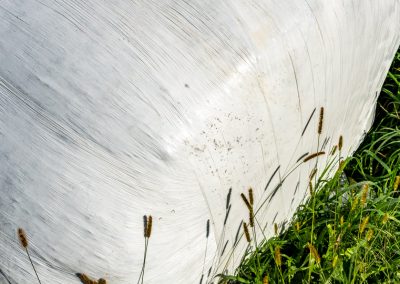
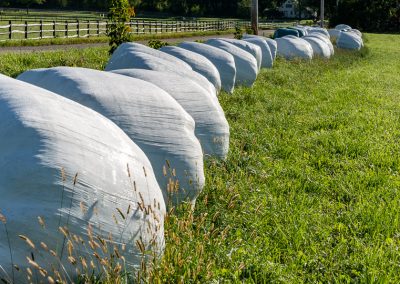

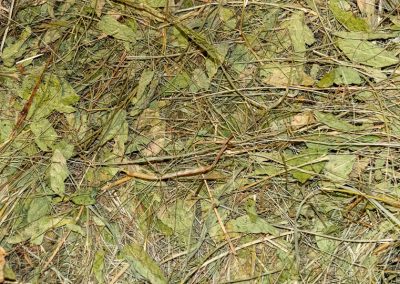
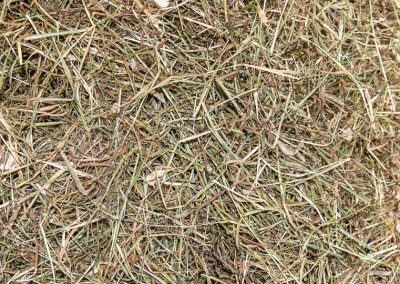
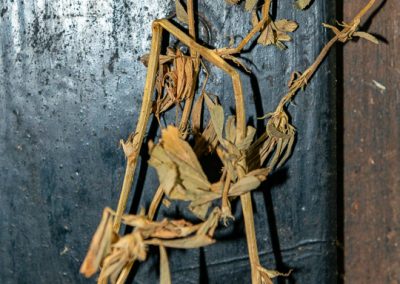
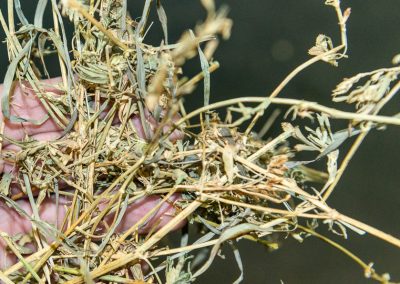
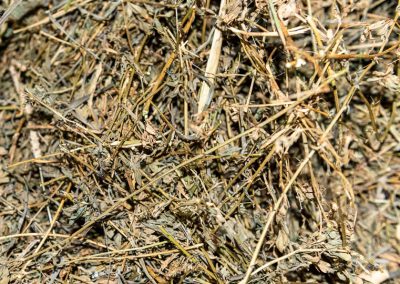

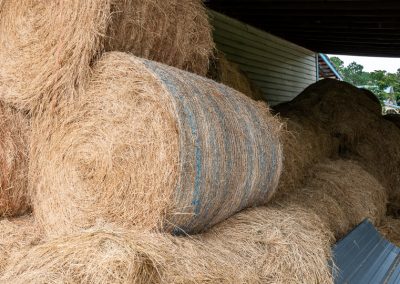
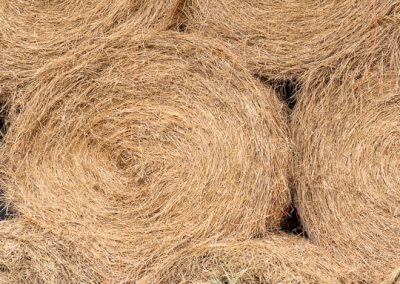
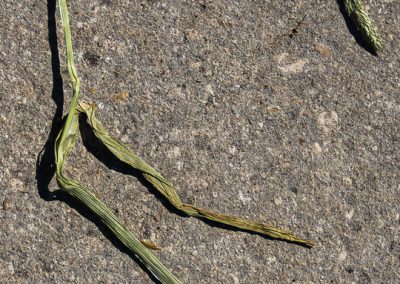
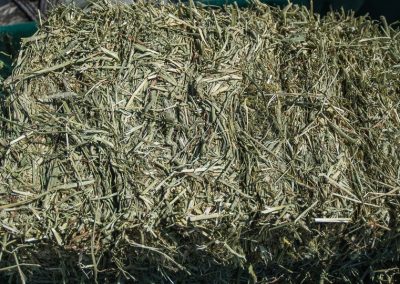
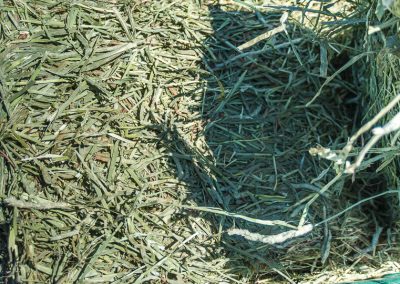
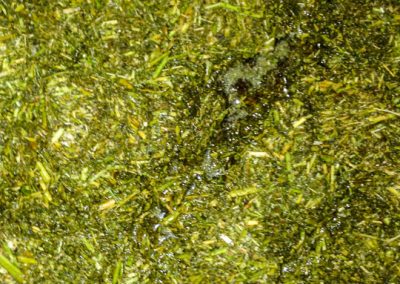
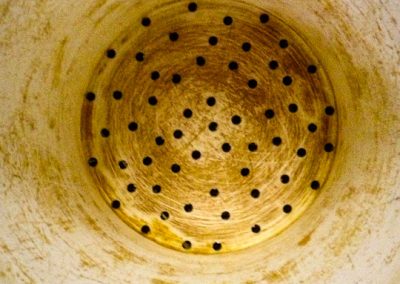
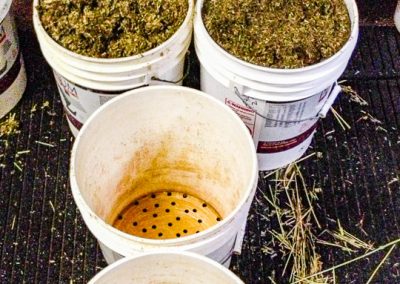



Hi Dr. Tucker,
Our mare Sassy has heaves and a local vet says a lot of horses in this area have allergic reactions to bahia grass and hay. Her pasture is a mix of grasses, but her hay has been bahia for several years. I found a local supplier that sells coastal and alicia (alecia) bermuda. However, there is a great deal of information online regarding bermuda hay being the vet’s best friend, suggesting bermuda causes a lot of horse to colic. I appreciate any insight you can share with me.
Many thanks,
Carol Pecot
Amite, LA
Heaves is a very complex subject. The first thing to do is to test her severity of heaves by performing a broncho-alveolar lavage (BAL) for a grade of 1 or 2 (treatable) or 3 or 4 (not treatable). If treatable then find the right medication that works for her and adjust the dosage to the minimum amount needed.
Why did I start with the diagnostics? Because identifying the cause of the heaves is just about impossible but even if you did, if the allergic process has advanced into stage 3 or 4 then removing the cause or treating the disease is unrewarding.
Heaves may be caused by the Bahia grass or it may be the molds on the grass or the lectins in the grass and all can be seasonal. Investigating this is frustrating because improving things usually requires the removal of several things in her diet even though it appears that only 1 thing caused an allergic event (worsening of the heaves).
Finally, there are many people who won’t feed Bermuda hay and others won’t feed Coastal hay because of impactions caused by them. There are other horse owners who feed only these hays without problems. My thoughts are that the hay is digested by the bacteria in the colon and if those bacteria are not healthy due to the horse being fed grain and / or sugar then the horse is likely to have colic from these types of undigested hay due to their higher fiber content and less leaf content. This is only my belief because I believe there is no reasonable research done on this – only anecdotal observations.